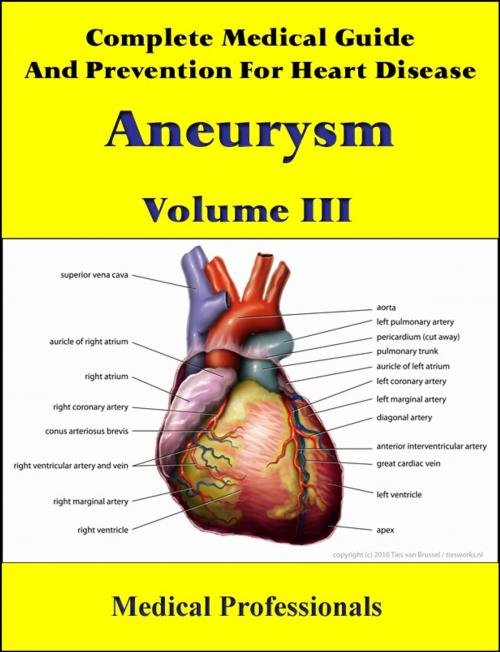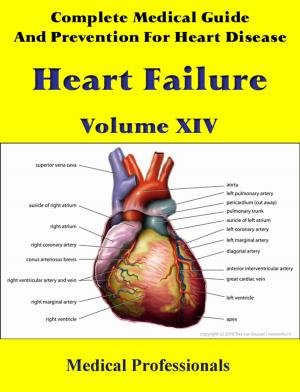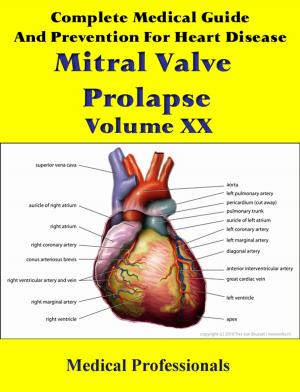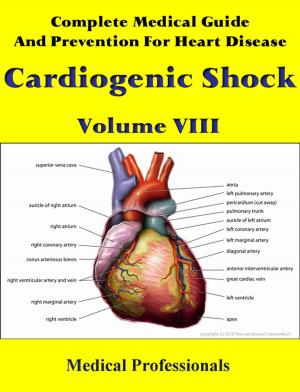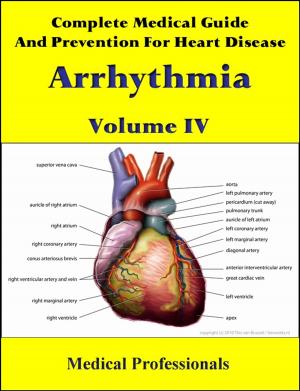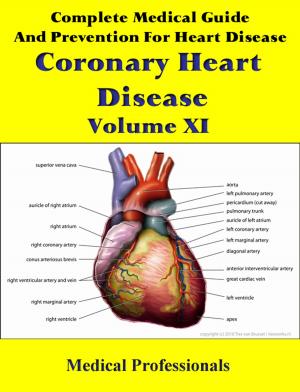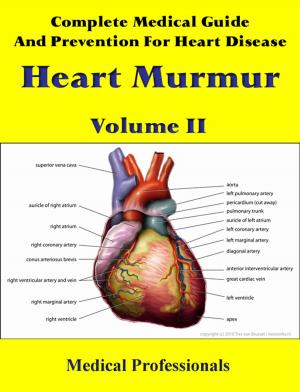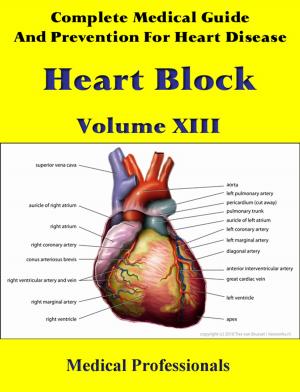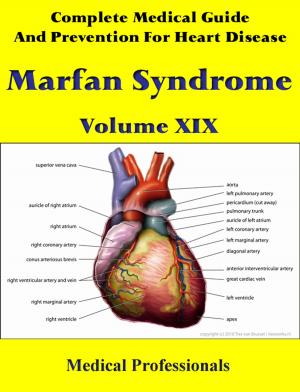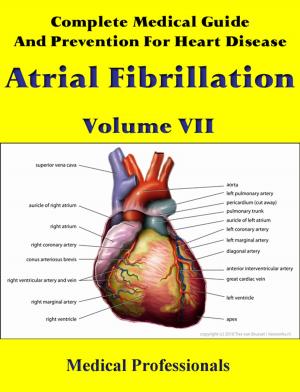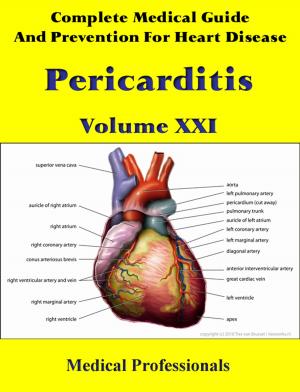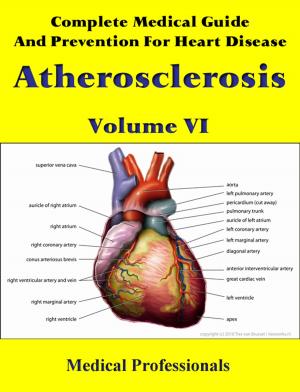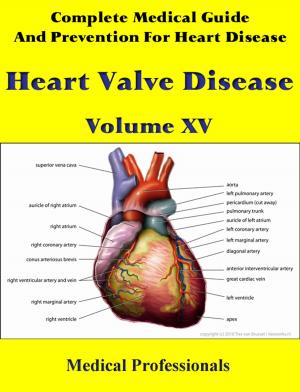Complete Medical Guide and Prevention for Heart Diseases Volume III; Aneurysm
Nonfiction, Health & Well Being, Health, Ailments & Diseases, Heart, Health Care Issues| Author: | Medical Professionals | ISBN: | 1230000037078 |
| Publisher: | MedHealth | Publication: | December 6, 2012 |
| Imprint: | Language: | English |
| Author: | Medical Professionals |
| ISBN: | 1230000037078 |
| Publisher: | MedHealth |
| Publication: | December 6, 2012 |
| Imprint: | |
| Language: | English |
An aneurysm or aneurism (from Greek: ἀνεύρυσμα - aneurusma "dilation", from ἀνευρύνειν - aneurunein "to dilate") is a localized, blood-filled balloon-like bulge in the wall of a blood vessel. Aneurysms can commonly occur in arteries at the base of the brain (the circle of Willis) and an aortic aneurysm occurs in the main artery carrying blood from the left ventricle of the heart. When the size of an aneurysm increases, there is a significant risk of rupture, resulting in severe hemorrhage, other complications or death. Aneurysms can be hereditary or caused by disease, both of which cause the wall of the blood vessel to weaken.
A true aneurysm is one that involves all three layers of the wall of an artery (intima, media and adventitia). True aneurysms include atherosclerotic, syphilitic, and congenital aneurysms, as well as ventricular aneurysms that follow transmural myocardial infarctions (aneurysms that involve all layers of the attenuated wall of the heart are also considered true aneurysms).
A false aneurysm or pseudo-aneurysm does not primarily involve such distortion of the vessel. It is a collection of blood leaking completely out of an artery or vein, but confined next to the vessel by the surrounding tissue. This blood-filled cavity will eventually either thrombose (clot) enough to seal the leak or rupture out of the tougher tissue enclosing it and flow freely between layers of other tissues or into looser tissues. Pseudoaneurysms can be caused by trauma that punctures the artery and are a known complication of percutaneous arterial procedures, such as arteriography, arterial grafting, or use of an artery for injection. Like true aneurysms, they may be felt as an abnormal pulsatile mass on palpation.
An aneurysm or aneurism (from Greek: ἀνεύρυσμα - aneurusma "dilation", from ἀνευρύνειν - aneurunein "to dilate") is a localized, blood-filled balloon-like bulge in the wall of a blood vessel. Aneurysms can commonly occur in arteries at the base of the brain (the circle of Willis) and an aortic aneurysm occurs in the main artery carrying blood from the left ventricle of the heart. When the size of an aneurysm increases, there is a significant risk of rupture, resulting in severe hemorrhage, other complications or death. Aneurysms can be hereditary or caused by disease, both of which cause the wall of the blood vessel to weaken.
A true aneurysm is one that involves all three layers of the wall of an artery (intima, media and adventitia). True aneurysms include atherosclerotic, syphilitic, and congenital aneurysms, as well as ventricular aneurysms that follow transmural myocardial infarctions (aneurysms that involve all layers of the attenuated wall of the heart are also considered true aneurysms).
A false aneurysm or pseudo-aneurysm does not primarily involve such distortion of the vessel. It is a collection of blood leaking completely out of an artery or vein, but confined next to the vessel by the surrounding tissue. This blood-filled cavity will eventually either thrombose (clot) enough to seal the leak or rupture out of the tougher tissue enclosing it and flow freely between layers of other tissues or into looser tissues. Pseudoaneurysms can be caused by trauma that punctures the artery and are a known complication of percutaneous arterial procedures, such as arteriography, arterial grafting, or use of an artery for injection. Like true aneurysms, they may be felt as an abnormal pulsatile mass on palpation.
